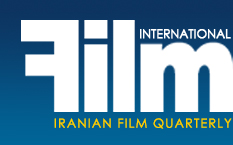|
Interview with Hamid Khozouei Abyaneh, cinematographer:
Negative Is Still Negative!
by Saeed Ghotbizadeh
|
Hamid Khozouei Abyaneh is among outstanding cinematographers of Iran with more than ten years of experience in professional cinema. He has been chosen as the best cinematographer of the year in three editions of Fajr International Film Festival. He started his career with Reza Mirkarimi and has won two prizes for the works done for him. Khozouei Abyaneh is known in Iran as a cinematographer with high technical abilities who is well versed about modern methods of professional cinematography in the world. Therefore, he has been in charge of many big productions in recent years. His last work was in Kingdom of Solomon (Shahriyar Bahrani) which is by now the most expensive film in the whole history of the Iranian cinema. Showing parts of the life of Solomon, the film is full of computerized special effects and huge scenes showing Solomon and his soldiers fighting supernatural foes. A lot of time and money has been put into the project and Kingdom of Solomon, as a state-sponsored project, has won many prizes from Fajr International Film Festival and the House of Cinema Celebration, including a prize for the best cinematography. In the following interview, Khozouei Abyaneh explains about his methods in Kingdom of Solomon and how a cinematographer can interact with director and special effect designer to make a film conform to international standards. Kingdom of Solomon hit the public screens in early fall 2010 and was a blockbuster.
Film International: What is the difference between cinematography for an ordinary project like most Iranian films and cinematography for a big production?
Khozouei Abyaneh: Cinematography is different in big productions and is not similar to our ordinary film projects. This difference can be understood through experiences and gaining that experience was an outcome of working for Kingdom of Solomon. When shooting big films, you need to know and use modern instruments and facilities of the world cinema. Digital Intermediate (DI), for example, is not well-known in Iran. Therefore, it was a kind of training for us and also helped us to understand the distance between the existing Iranian cinema and technical standards of the world cinema.
FI: Please explain about DI technology.
KA: In this method, recorded pictures are first scanned and turned into computerized data (zeros and ones) before being printed to negative after certain changes. Those changes include visual effects and so on. Visual information is first recorded on computer data. Therefore, when they are converted to computer data, you can do whatever you like to them. A major lesson to be learned in such projects is to understand the importance of post-production stage. As director of photography, you should know which part of the work belongs to post-production, so as to save time and make sure that shooting problems can be corrected in the next stage. In ordinary projects, cinematographer only deals with director and set designer, but in a project like Kingdom of Solomon, art manager and special effect designer should be also dealt with. When cinematographer knows what software should correct light and colors in post-production, he/she would not waste time using color filters because he knows about capabilities of recorded pictures. Therefore, you don’t have to do everything on the set.
FI: Don’t you think that this will restrict cinematographer’s creativity?
KA: I think this process can even improve cinematography. Many important sequences in Alexander (Oliver Stone) were shot using three or four cameras. His director of photography said in an interview that working with so many cameras assured him that if there were a mistake (like an unsuitable frame or objects popping up into the frame) it could be corrected in post-production. Therefore, this technology is sure to help the project provided that other crewmembers also know about it. When shooting Kingdom of Solomon, there were sometimes redundant lamps or lights in our frame but we knew that they were to be erased digitally and replaced with sky or something else.
FI: In that case, you should have accurate storyboard for every plan.
KA: We had an accurate storyboard for our visual plans (I mean, scenes with special effects in them), but non-visual plans sometimes changed in the act.
[Page: 79]
|
|
|
|
|
President & Publisher
Massoud Mehrabi
Editors:
Sohrab Soori
Translators:
Sohrab Soori
Behrouz Tourani
Zohreh Khatibi
Contributors
Saeed Ghotbizadeh
Mehrzad Danesh
Advertisements
Mohammad Mohammadian
Art Director
Babak Kassiri
Ad Designers
Amir Kheirandish
Hossein Kheirandish
Cover Design
Alireza Amakchi
Correspondents
E.Emrani & M. Behraznia (Germany)
Mohammad Haghighat (France)
A. Movahed & M. Amini (Italy)
Robert Richter (Switzerland)
F. Shafaghi (Canada)
B. Pakzad (UAE)
H. Rasti (Japan)
Print Supervisors
Shad-Rang
Noghreh-Abi
Gol-Naghsh
Subscription & Advertising Sales
Address: 10, Sam St., Hafez Ave., TEHRAN, IRAN
Phone: +98 21 66722444
Fax: +98 21 66718871
info@film-magazine.com
Copyright: Film International
© All rights reserved,
2023, Film International
Quarterly Magazine (ISSN 1021-6510)
Editorial Office: 5th Floor, No. 10
Sam St., Hafez Ave., Tehran 11389, Iran
Printed in Tehran
Publishing Date Winter 2011
*
All articles represent views of their
authors and not necessarily
those of the editors
|
|
|

